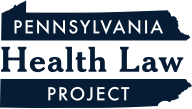CMS Releases Comprehensive EPSDT Guidance to States
Last week, the Centers for Medicare & Medicaid Services (CMS) released comprehensive guidance to states to help ensure they are meeting their obligations under the Early and Periodic Screening, Diagnostic, and Treatment (EPSDT) program—the children's health component of federal Medicaid law. The guidance provides states with an overview of EPSDT requirements and lays out concrete steps states must take to meet the goal of EPSDT: ensuring that children have access to the right care, at the right time, in the right setting.
The guidance was shared in a 57-page State Health Official letter and is divided into three board areas:
- Promoting EPSDT awareness and accessibility to ensure eligible beneficiaries have comprehensive coverage, are aware of their coverage, know how to access Medicaid benefits, and have supports like transportation and care coordination to facilitate getting the care that they need.
- Expanding and using the child-focused workforce by broadening provider qualifications, using telehealth, encouraging the use of interprofessional consultation, and using payment methodologies to address provider shortages and to help assure that there are an adequate number of health care providers available to meet the needs of beneficiaries.
- Improving care for children with specialized needs, with a particular focus on how EPSDT requirements relate to the unique needs of children with behavioral health conditions, children in foster care, and children with disabilities or other complex health needs.
The main components of the guidance are outlined below.
Promoting EPSDT Awareness and Accessibility
- States must inform beneficiaries about EPSDT services using clear, accessible language.
- Provide scheduling assistance and transportation for medical appointments.
- Use care coordination and case management to improve healthcare accessibility.
- Ensure Medicaid policies reflect EPSDT requirements, including medical necessity criteria and fair hearing processes.
Expanding and Using the Children-Focused (EPSDT) Workforce
- Broaden provider qualifications to include non-licensed practitioners.
- Utilize telehealth to address provider shortages, especially in rural areas.
- Encourage interprofessional consultation to expand access to specialty care.
- Implement payment methodologies that incentivize provider participation in EPSDT.
Improving Care for Children with Specialized Needs:
- Behavioral Health: Cover a broad array of mental health and substance use disorder services, ensure services are provided in the most integrated setting, and comply with mental health parity requirements.
- Foster Care: Collaborate with child welfare agencies, ensure timely health assessments, and provide dedicated managed care plans or liaisons for foster children.
- Disabilities or Complex Health Needs: Ensure access to necessary services, including out-of-state providers if needed, and provide robust care coordination.
Best Practices
- Use clear language in materials, provide web-based information, and use social media for outreach.
- Incentivize managed care plans to assist with appointment scheduling and provide proactive outreach.
- Establish single points of entry for behavioral health systems and ensure comprehensive care coordination.
States are encouraged to reach out to CMS for technical assistance and support as they implement the guidance issued last week. CMS has communicated its intent to work collaboratively with states to ensure that EPSDT requirements are being met. We will share additional updates specific to Pennsylvania's implementation of the new guidance as information becomes available.
